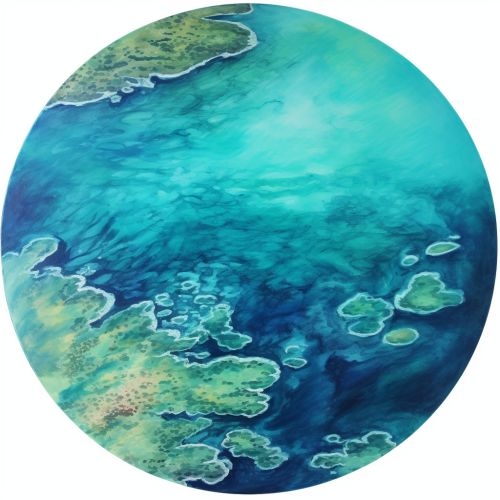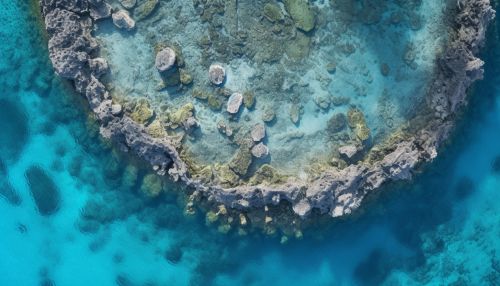Atoll
Introduction
An atoll is a ring-shaped coral reef, island, or series of islets. An atoll surrounds a body of water called a lagoon. Sometimes, atolls and lagoons protect a central island. Channels for exchange of water with the open sea may exist in the atoll ring.


Formation
Atolls are formed from the coral that grows in warm waters around the edges of a volcanic island. Over time, the volcano gradually sinks, as it is eroded and its base subsides into the seabed. As the volcanic island subsides, the coral continues to grow, maintaining its position relative to the sea level. Eventually, the volcano is completely submerged and only the ring of coral remains. This process of atoll formation is known as the Darwin's subsidence theory, named after Charles Darwin, who proposed this theory in 1842.
Structure and Composition
Atolls are composed of biogenic carbonate, a substance formed from the skeletal remains of tiny marine organisms called foraminifera and the calcareous algae, coralline algae. The reef-building corals and coralline algae are the primary architects of atolls, creating complex structures that provide habitats for a diverse range of marine species.
Ecology
Atolls are rich in biodiversity and are home to a multitude of marine species. The coral reef of an atoll provides a habitat for a diverse array of organisms, including fish, invertebrates, and marine mammals. The lagoon enclosed by the atoll serves as a nursery for many species, providing a safe space for young organisms to grow before venturing out into the open ocean.
Threats and Conservation
Atolls are threatened by a variety of factors, including climate change, sea level rise, and human activities such as overfishing and pollution. Efforts to conserve atolls and their unique ecosystems include establishing marine protected areas, implementing sustainable fishing practices, and conducting research to better understand these complex ecosystems.
